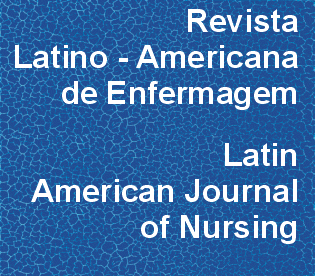Enfermeiros migrantes no Brasil: características demográficas, fluxos migratórios e relação com o processo de formação
DOI:
https://doi.org/10.1590/1518-8345.0390.2686Resumo
Objetivo analisar a migração de enfermeiros no Brasil, descrevendo as características demográficas dos enfermeiros migrantes, os principais fluxos migratórios, estabelecendo relações com o processo formativo. Método estudo descritivo exploratório, a partir dos dados do Censo Demográfico do ano 2010. Os dados foram tratados pela estatística descritiva. Resultado havia 355.383 enfermeiros residentes no Brasil no ano 2010. Desses, 36.479 (10,3%) relataram movimentação na comparação com o ano 2005, sendo 18.073 (5,1%) por migração intraestadual, 17.525 (4,8%) por migração interestadual e 871 (0,2%) por migração internacional. Predominou, na população de enfermeiros, o sexo feminino (86,3%), a raça/cor da pele branca (65,2%) e o estado civil solteiro (48,3%), sem variações consideráveis entre os grupos, segundo a situação de migração. Os achados indicam fluxos de migração orientados pelo processo de formação para Estados que concentram número de cursos e vagas na graduação e pós-graduação stricto sensu e a motivação por oportunidade de empregos em regiões de expansão econômica do país. Conclusão é necessário aprofundar a discussão sobre a movimentação de enfermeiros no Brasil, suas motivações e fluxos migratórios internacionais.Downloads
Os dados de download ainda não estão disponíveis.
Downloads
Publicado
2016-01-01
Edição
Seção
Artigos Originais
Licença
Os direitos autorais são de propriedade exclusiva da revista, transferidos por meio da Declaração de Transferência de Direitos Autorais (presente no Formulário Individual de Declarações) assinada pelos autores. Para a utilização dos artigos, a RLAE adota a Licença Creative Commons, CC BY-NC Atribuição não comercial (resumo ou código completo da licença). Com essa licença é permitido acessar, baixar (download), copiar, imprimir, compartilhar, reutilizar e distribuir os artigos, desde que para uso não comercial e com a citação da fonte, conferindo os devidos créditos autorais a Revista Latino-Americana de Enfermagem. Nesses casos, nenhuma permissão é necessária por parte dos autores ou dos editores.Como Citar
Enfermeiros migrantes no Brasil: características demográficas, fluxos migratórios e relação com o processo de formação . (2016). Revista Latino-Americana De Enfermagem, 24, e2686-. https://doi.org/10.1590/1518-8345.0390.2686



